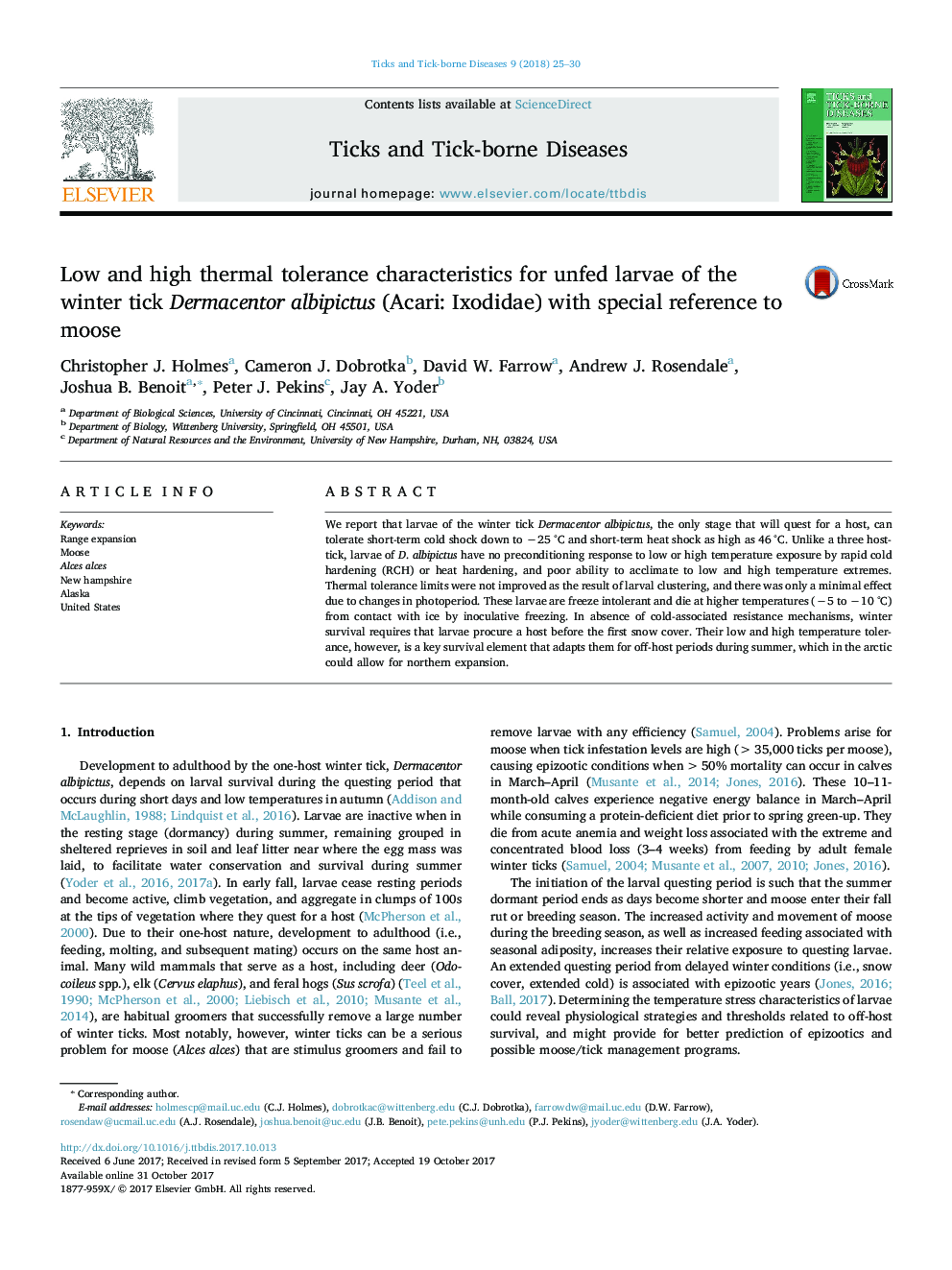| کد مقاله | کد نشریه | سال انتشار | مقاله انگلیسی | نسخه تمام متن |
|---|---|---|---|---|
| 8507422 | 1555963 | 2018 | 6 صفحه PDF | دانلود رایگان |
عنوان انگلیسی مقاله ISI
Low and high thermal tolerance characteristics for unfed larvae of the winter tick Dermacentor albipictus (Acari: Ixodidae) with special reference to moose
دانلود مقاله + سفارش ترجمه
دانلود مقاله ISI انگلیسی
رایگان برای ایرانیان
کلمات کلیدی
موضوعات مرتبط
علوم زیستی و بیوفناوری
علوم کشاورزی و بیولوژیک
علوم دامی و جانورشناسی
پیش نمایش صفحه اول مقاله

چکیده انگلیسی
We report that larvae of the winter tick Dermacentor albipictus, the only stage that will quest for a host, can tolerate short-term cold shock down to â25 °C and short-term heat shock as high as 46 °C. Unlike a three host-tick, larvae of D. albipictus have no preconditioning response to low or high temperature exposure by rapid cold hardening (RCH) or heat hardening, and poor ability to acclimate to low and high temperature extremes. Thermal tolerance limits were not improved as the result of larval clustering, and there was only a minimal effect due to changes in photoperiod. These larvae are freeze intolerant and die at higher temperatures (â5 to â10 °C) from contact with ice by inoculative freezing. In absence of cold-associated resistance mechanisms, winter survival requires that larvae procure a host before the first snow cover. Their low and high temperature tolerance, however, is a key survival element that adapts them for off-host periods during summer, which in the arctic could allow for northern expansion.
ناشر
Database: Elsevier - ScienceDirect (ساینس دایرکت)
Journal: Ticks and Tick-borne Diseases - Volume 9, Issue 1, January 2018, Pages 25-30
Journal: Ticks and Tick-borne Diseases - Volume 9, Issue 1, January 2018, Pages 25-30
نویسندگان
Christopher J. Holmes, Cameron J. Dobrotka, David W. Farrow, Andrew J. Rosendale, Joshua B. Benoit, Peter J. Pekins, Jay A. Yoder,